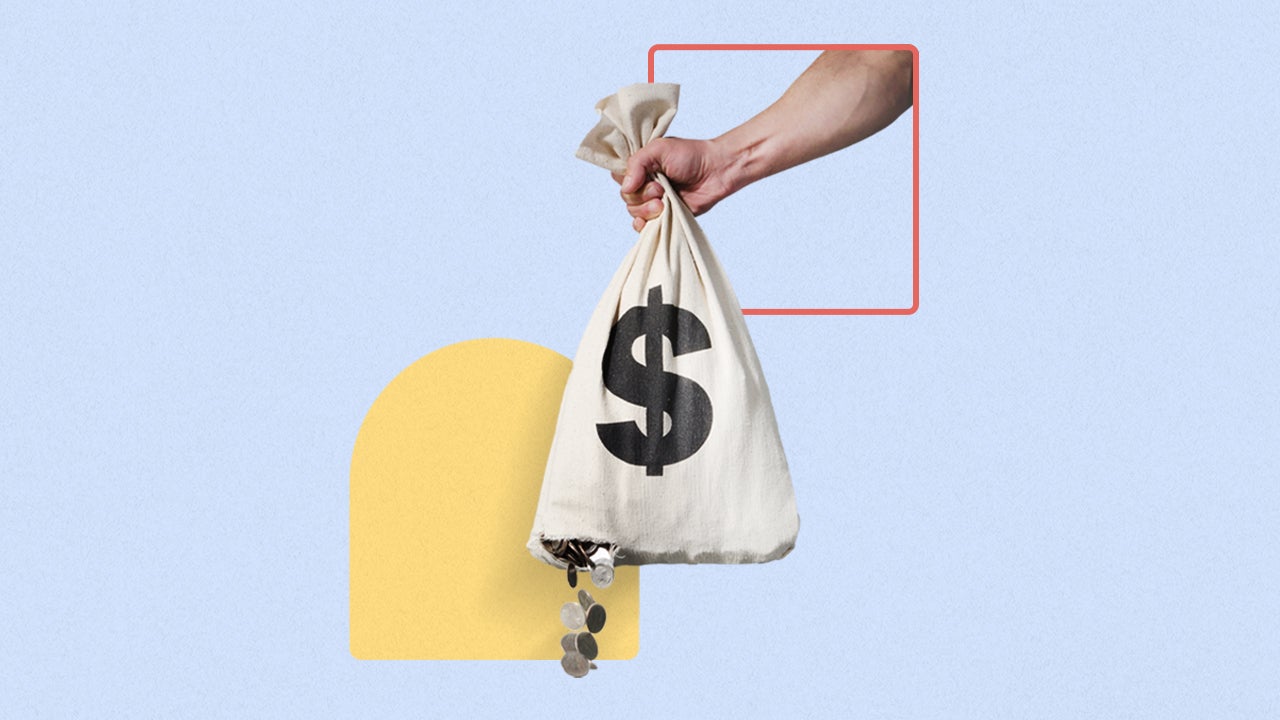Chapter 13 bankruptcy: What you need to know




Key takeaways
- Chapter 13 bankruptcy allows people with regular income to repay debts over time, protecting assets and recovering financial stability.
- To qualify, individuals must meet income and debt limits and propose a feasible repayment plan.
- Chapter 13 offers a structured plan but might have longer timelines and higher costs than alternative debt relief options.
Filing for bankruptcy is a major financial decision, and understanding the different options is essential for making the right choice. Chapter 13 bankruptcy, known as a “wage earner’s plan,” is a popular route for individuals who want to repay their debts while keeping more assets.
Unlike Chapter 7 bankruptcy, which involves liquidating assets, Chapter 13 allows you to reorganize your finances and make manageable payments over a set period.
Chapter 13 bankruptcy: The basics
Chapter 13 bankruptcy lets you reorganize and repay your debts over three to five years. You make monthly payments to a trustee through a court-approved repayment plan. A trustee is an individual or entity responsible for overseeing a bankruptcy case. In chapter 13 bankruptcy, the trustee is responsible for reviewing the proposed payment plan, collecting payments and disturbing payments to creditors.
Chapter 13 bankruptcy allows you to avoid foreclosure or repossession by letting you make up missed payments over time. It can also provide a manageable path to repaying non-dischargeable debts, such as certain taxes or government fines.
To qualify for this type of bankruptcy, you must have a steady income and unsecured debts totaling less than $465,275 and secured debts totaling less than $1,395,875.
Additionally, you must attend credit counseling sessions to help you understand and improve your financial management. Once a Chapter 13 plan is completed, any remaining eligible debt is discharged. However, some debts, such as student loans, usually remain even after bankruptcy.
Sole proprietors can also use Chapter 13 to manage personal and business debts. Because sole proprietors are legally indistinct from their businesses, all personal and business debts are included in the bankruptcy filing. A sole proprietor can use Chapter 13 to address overdue business expenses, vendor payments and other liabilities while continuing to operate the business. This structure benefits those who rely on their business for income and want to avoid shutting it down, which could occur in a Chapter 7 liquidation.
How Chapter 13 bankruptcy works
Upon filing for Chapter 13 bankruptcy, you must submit a proposal for repaying all or part of your debt, which includes a detailed account of your income, expenses, debts and assets. The bankruptcy court reviews this proposal and assigns a trustee to oversee the case. The trustee collects and distributes your monthly payments to creditors according to the repayment plan.
During this period, an automatic stay goes into effect, stopping creditors from attempting to collect debts or repossess property.
Priority debts — such as certain tax debts or child support obligations — are generally paid first, followed by secured debts like car loans or mortgages. Unsecured debts, such as credit card balances or medical bills, may receive a reduced payment or, in some cases, may not be fully paid by the end of the plan. The plan’s exact payment amount and duration depend on your income level and total debt; generally, those with lower incomes and debts complete a three-year plan, while others may be required to fulfill a five-year plan.
If you successfully complete the repayment plan, any remaining eligible debt included in the bankruptcy filing is discharged, meaning you are no longer legally obligated to pay it.
Chapter 13 vs. Chapter 7 bankruptcy
In Chapter 7 bankruptcy, also known as “liquidation bankruptcy,” your non-exempt assets are sold to pay off creditors. Most of your remaining eligible debts are discharged once these assets are liquidated and the funds are distributed. On the other hand, Chapter 13 is a “reorganization bankruptcy” that allows you to create a repayment plan without liquidating assets.
Eligibility requirements for each type of bankruptcy also differ. Chapter 7 is generally available to lower-income individuals who pass a means test. If you earn more than the threshold, you may be directed to Chapter 13 instead.
In Chapter 7, the process usually takes a few months before eligible debts are discharged, and you may lose some assets. In Chapter 13, you make monthly payments according to a structured plan. Once the plan is complete, the remaining eligible debts are discharged. You can keep your property if you comply with the repayment plan.
While Chapter 7 offers faster relief, Chapter 13 can be better suited for those seeking to manage their debt while retaining essential assets.
Pros and cons of Chapter 13
While Chapter 13 bankruptcy offers significant benefits, it also comes with challenges. Evaluating the pros and cons of Chapter 13 is crucial to understanding whether it aligns with your financial needs and long-term goals.

Pros
- Asset retention: Chapter 13 allows you to keep certain non-exempt assets as long as you make regular payments according to the repayment plan.
- Automatic stay on collections: Filing for Chapter 13 initiates an automatic stay, which stops creditors from attempting to collect debts, repossess property or pursue lawsuits.
- Discharge of remaining eligible debt: At the end of a successful Chapter 13 plan, the remaining eligible debt is discharged, giving you a fresh start without debt, although you’ll need to rebuild your credit.
- Structured debt repayment: Chapter 13 provides a structured repayment plan over three to five years, which can be helpful for those who need manageable monthly payments.

Cons
- Impact on credit score: Like all bankruptcies, Chapter 13 affects your credit score and remains on your credit report for up to seven years. This can make it challenging to qualify for loans or favorable credit terms in the future.
- Long repayment period: Chapter 13 typically requires a three- to five-year repayment plan, which can be a lengthy commitment compared to Chapter 7, where debts are usually discharged in a few months.
- Non-dischargeable debts: Not all debts are dischargeable through Chapter 13. For example, student loans, certain tax obligations and domestic support arrears generally remain your responsibility even after completing the repayment plan.
- Regular income requirement and debt limits: Chapter 13 requires a steady income to fund the repayment plan, which may not be an option for those with inconsistent or insufficient earnings.
How to file for Chapter 13 bankruptcy
To successfully navigate Chapter 13 bankruptcy, you must complete the necessary steps. Any mistakes could result in delays or denial of discharge, so a thorough understanding of the bankruptcy procedures is paramount. Below is a step-by-step guide to the process.
- Consult a bankruptcy attorney and complete credit counseling: An attorney is optional, but credit counseling is not. It’s helpful to meet with an attorney to discuss your case to make sure you know everything necessary for a positive outcome. Then take a required credit counseling course within 180 days before filing.
- Gather financial documents and file petition: Collect all financial records and submit your bankruptcy petition, schedules and repayment plan to the court.
- Begin automatic stay: Filing activates an automatic stay to halt creditor actions.
- Attend the meeting of creditors and confirmation hearing: Attend the meeting with the trustee and creditors, then a court hearing where your repayment plan is reviewed.
- Make payments and complete the financial course: Begin monthly payments to the trustee, and take a debtor education course during repayment.
- Complete the plan and receive a discharge: After you finish all payments, the remaining eligible debts are discharged.
Chapter 13 bankruptcy fees
Chapter 13 bankruptcy fees include court filing fees, attorney fees and trustee fees, as well as additional costs for required credit counseling and debtor education courses. While these expenses may seem significant, they are often structured to be manageable and even incorporated into the repayment plan.
Here’s a breakdown of Chapter 13 bankruptcy fees:
- Attorney fees: Chapter 13 cases typically range from $2,500 to $5,000, depending on the case’s complexity and geographic location.
- Court filing fees: The standard filing fee for a Chapter 13 bankruptcy is $313.
- Post-filing debtor education: A debtor education course is also mandatory after filing, and fees generally range from $10 to $50.
- Pre-filing credit counseling: You must complete a credit counseling session before filing, which typically costs between $10 and $50.
- Trustee fees: Chapter 13 trustees collect a percentage from your monthly payments, up to 10 percent, though it often ranges between 5 and 8 percent.
Chapter 13 bankruptcy alternatives
While bankruptcy can be a viable option for some, it’s important to explore alternative options before moving forward. Here are a few debt relief methods to consider:
- Credit counseling: A credit counseling agency can help you create a budget, negotiate with creditors and develop a debt management plan. This option can benefit individuals with manageable debt loads who need guidance in organizing their finances.
- Debt consolidation: This method combines multiple debts into a single loan with a lower interest rate. This can simplify your payments and reduce your overall debt.
- Debt settlement: This option involves negotiating with creditors to settle debts for less than the full amount owed. However, this can be considered even worse than bankruptcy because of the cost and long-term consequences.
Before pursuing any of these alternatives, it’s a good idea to consult with a financial advisor or credit counselor to assess your financial situation and determine the best course of action.
The bottom line
Chapter 13 bankruptcy offers a way to reorganize and pay off debts over three to five years without losing essential assets like a home or car. It provides a structured repayment plan and an automatic stay on creditor actions, offering some breathing room and protection from collections.
While Chapter 13 requires a significant time commitment and consistent income, it can be a powerful tool for those seeking debt relief with a manageable monthly payment structure.
Frequently asked questions
Why we ask for feedback Your feedback helps us improve our content and services. It takes less than a minute to complete.
Your responses are anonymous and will only be used for improving our website.




